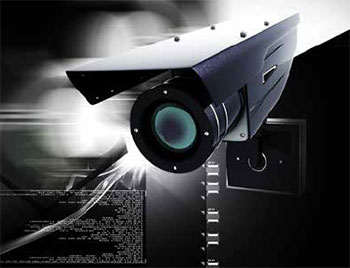
Next Revolution of IP in Security
Top three myths of IP-based physical access control technology
- By Ola Jönsson
- Feb 06, 2014
 It is no exaggeration to say that network
video technology has revolutionized the
video surveillance market, and the access
control industry is on the verge of a similar
revolution.
It is no exaggeration to say that network
video technology has revolutionized the
video surveillance market, and the access
control industry is on the verge of a similar
revolution.
Today, network video solutions offer
drastically better image quality, scalability,
functionality, intelligence and remote accessibility
benefits that cannot be provided by analog video surveillance
technology. These IP benefits are very familiar to IT professionals
and are common reasons for leveraging the network as the
lynchpin for essentially all business applications.
Once again, it is the transition from analog to IP-based, digital
systems and the mounting adoption of open standards that will
stimulate market growth and provide new access control opportunities
for the entire channel—from the hardware and software
manufacturers, to the distributor, to the integrator and the endcustomer.
Yet, just like in the early days of IP video, VoIP and the Internet
revolution, there are a number of common misconceptions
as the physical access control industry transitions its technology
from analog to IP. Here are the top three myths about IP-based
access control perpetuated today.
Myth #1 - It’s not worth upgrading existing
analog systems to IP-based technology.
A typical analog access control system is dependent on having
each device—the card reader, handle, door lock, door position
switch and so on—hard wired with RS-485 cable into one central
unit or central server. On top of this installation method, creating
a proprietary system that confines the end-customer to one single
provider of hardware and software, these solutions often tend to
be very complex and require expert staff to handle installation
and configuration.
So, like with IP video systems, integrators and end customers
must look at the total cost of ownership over the life of the
system which, in addition to the initial investment, should include
long-term maintenance and upkeep, as well as future system
needs and growth.
When expanding analog access control systems today, the
process is complicated. Users must consider that a typical central
controller is built to accommodate a certain maximum number of
doors, normally four, eight, 16 or 32. These are similar DVR installation
increments that currently limit analog CCTV users. Not only
does this limitation make the system inflexible, but it also makes it
difficult for the end customer to match specific system requirements
with available products, such as a need for access control at nine or
17 doors. This lack of flexibility brings high marginal costs that can
make the addition of one extra door unjustifiably expensive.
Upgrading an analog access control system to IP-based technology
allows for more flexibility while lowering costs as the system
needs to be expanded to include additional doors.
Furthermore, IP networks can be used for more than one application.
This way, different security systems can use the same
infrastructure and can be more easily integrated with each other,
similar to how VoIP systems can integrate with larger unified
communication platforms. In the physical security world, remote
monitoring and management of security systems is often a key
requirement. This can be easily implemented with IP-based solutions
that feature web-based console access.
Myth #2 - Access control systems
are only for large installations.
Analog access control products and systems are normally designed
and optimized by manufacturers for large installations
with a lot of doors and possibly thousands of credentials, such as
cardholders. Unfortunately, the actual market looks very different,
with only a small percentage of today’s installations having
more than 10 doors.
Chances are that in a smaller access control installation, the
system might be managed by the business owner or IT department.
The smaller the company, the less likely it is to have a physical
security or operations department, so using an intuitive and
familiar IP interface while leveraging the business’ existing networking infrastructure will be more manageable.
Additionally, by eliminating the need for hard wiring to a central
control unit or central server common in analog installations,
IP-based access control systems enable much more flexibility and
scalability. This means not only a more versatile solution, but
also a more cost efficient one. Freed from the constraints of enlarging
the system in certain multiples, a network-based solution
can be enlarged by one door and one reader at a time.
Lastly, IP-based technology enables “edge” solutions with one
controller for each door. This controller is connected to a local
Ethernet port through a regular network switch without the need
for a central server for management. Since IP networks now are
ubiquitous in offices, stores, factory plants and similar facilities,
the cost of adding an IP-based door controller would be minimal,
as opposed to multiple serial connections wired back to a
central server needed in a traditional installation.
Cabling work can be even further facilitated in these smallto
mid-sized systems by employing a PoE-supported controller
at each door. The need for a separate power cable is eliminated
thereby reducing cabling even further and, in turn, the total installation
cost and time compared to that of an analog access
control solution.
Myth #3 - Access control systems are
proprietary solutions that can’t be
integrated with other security systems.
Similar to other markets that have moved to network-based technologies,
the shift from analog to IP-based solutions in the access
control industry will cause a transition from proprietary systems
to open platforms. And, if we follow a similar migration path,
these solutions will most likely be based on international industry
standards.
Open solutions and standardized interfaces are a prerequisite
in any industry that wants to establish its own equivalent
of “plug-and-play.” There are many gains from such a development
in access control as it will allow end users to freely pick and
choose between components—reader, door controller and software—
that best satisfy their needs and preferences.
This freedom of choice makes the system future-proof and
means the end user no longer has to rely on a single brand or
supplier. Equally important, it can enable integration with other
security-related systems and third-party applications without the
need for costly hardware boxes to provide the “bridge” between
the different systems.
For example, a common request is to integrate physical access
control with video surveillance. People entering a building will automatically
trigger a camera, and then the live images can be used
for investigation of incidents or identity control within a building.
In the network security systems market, there is already a
clear trend to develop open or standardized application platform
interfaces (APIs) that can be used by all competing market participants
on fair, reasonable and non-discriminatory terms. Naturally,
this will increase supply, promote competition and bring
a new level of innovation to the industry while simultaneously
making it even easier for end users, system integrators, consultants
and others to take advantage of the different possibilities
offered by IP-based solutions.
For example, the Open Network Video Interface Forum (ONVIF),
a global and open industry standards body with the goal
to facilitate the development and use of IP-based security products,
announced in 2010 an extension of the organization’s scope
of standardization to cover physical access control. Ideally, access
control devices from manufacturers that comply with ONVIF
standards will in the near future interoperate effortlessly and seamlessly
with each other, as well as with other video surveillance products
and other systems conformant with the standard.
This article originally appeared in the February 2014 issue of Security Today.